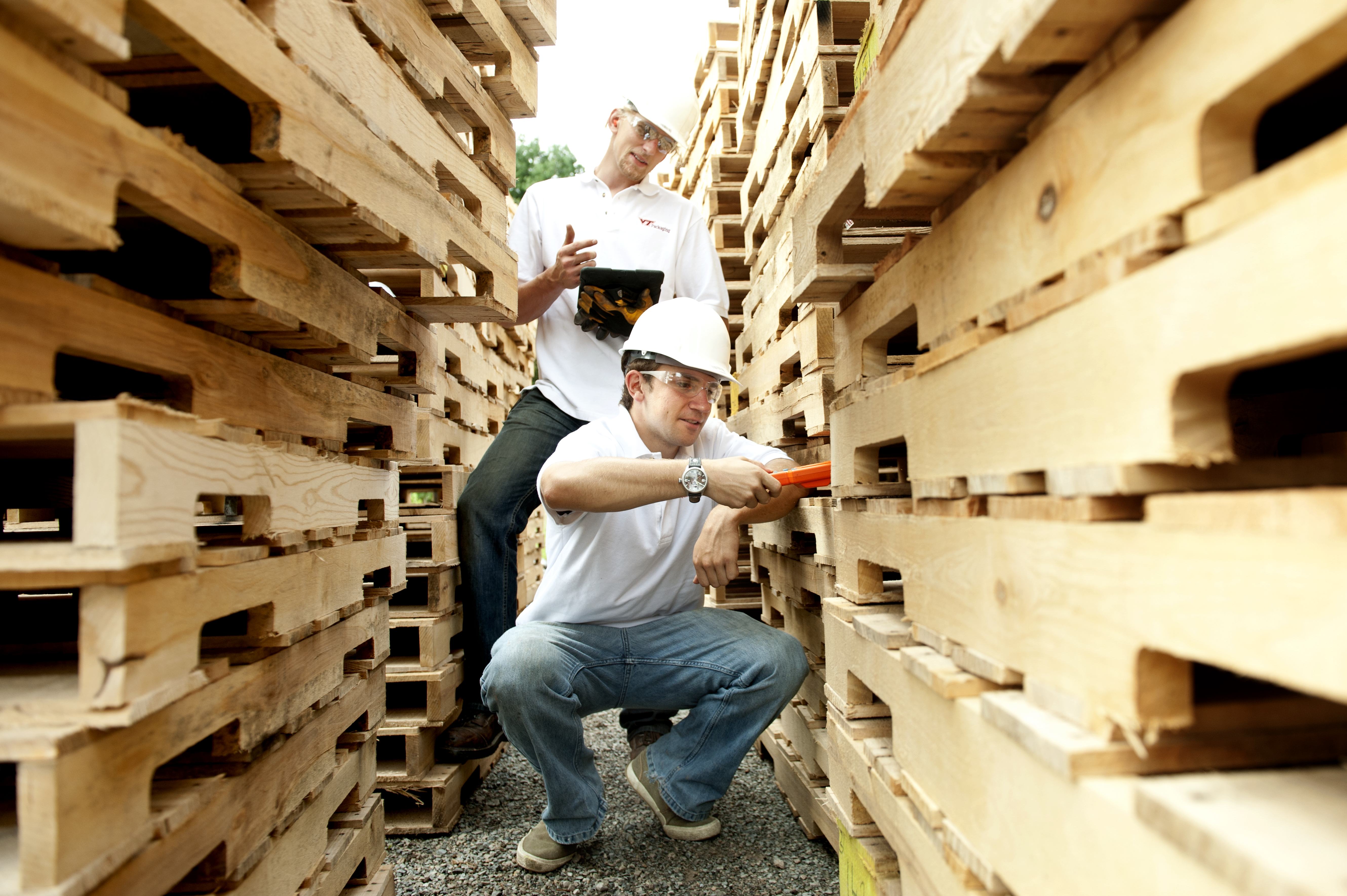Students learn the ins and outs of packaging

Retail giants like Target wouldn’t be the bargain shopper’s paradise they are today without massive warehouses to package and organize their merchandise. Virginia Tech, home to one of the few undergraduate programs in packaging science, prepares students for careers in packaging, the third largest industry in the world.
Each summer, a select group of student interns enhance their classroom education with experiential learning, seeing firsthand how important packaging is to everyday life and how the university’s Center for Packaging and Unit Load Design makes packaging systems as safe and efficient as possible.
Sophomore Zachary Shiner of Exton, Pa.; sophomore Jason Hoepker of Haymarket, Va.; and senior Rosemary Masser of Frederick, Md. — all students in the packaging science option under the wood science and forest products major in the College of Natural Resources and Environment — comprised the inaugural group of interns in 2012. “It was really exciting to see their transformation over the summer,” said Assistant Professor Laszlo Horvath, director of the center, which is based in the Department of Sustainable Biomaterials.
The internship includes a combination of course learning, lab testing, field trips, and other tasks.
Last year’s students began their summer with a two-day crash course in pallet and unit load design from Professor Emeritus Marshall White, the center’s founder. They also toured Target’s 1.5-million-square-foot warehouse in Stuarts Draft, Va., one of the largest buildings in the state, where they learned about the company’s racking systems, package tracking process, and overall operating procedures.
For much of the summer, the interns tested mold on pallets for a manufacturer in Wisconsin, ranking the pallets according mold levels and measuring their moisture content.
“The pallets get shipped in trailers, and if someone is driving across the country, it can be a long time before anyone opens that trailer,” Shiner said. A company can lose time and money if pallets become moldy during their journey.
“If you have mold on a pallet, it can easily spread to the product,” Hoepker said. The interns found that trailers with good ventilation systems effectively prevent mold growth on pallets.
The interns traveled to Richmond, Va., for the East Coast Sawmill and Logging Equipment Exposition, America’s leading trade show for the forestry industry, where they staffed a booth representing the center and the sustainable biomaterials department and answered curious attendees’ questions about packaging science. They also learned how a tree becomes a pallet as well as how pallets are built and recycled.
In addition to conducting testing and taking field trips, the students revamped the center’s lab at the Thomas M. Brooks Forest Products Center. Using the principles of lean manufacturing, which target waste in an organization, they transformed the lab from a disorganized mess to a neat freak’s heaven.
“When we first got there, some of the rooms were completely filled with boxes and you could barely open the door,” Hoepker said. The team removed broken and unnecessary items from the lab and organized tools and equipment, installed new shelf systems, painted machines, and created task boards.
The students’ experience not only augmented their academic coursework, it also set them on a path to valuable internships and jobs. Masser secured a job with Manhattan Associates six months before graduating in May. Shiner used his experience to secure an internship this summer with Packaging Corporations of America.
The internship program, which targets younger students to become leaders in the design of sustainable packaging systems, is being further expanded this summer to include five students majoring in wood science and forest products:
- Junior Cyrus Adibpour of Fairfax, Va.;
- Junior Page Clayton of Exmore, Va.;
- Junior Michael Fortunato of Cockeysville, Md.;
- Sophomore Richard Good of Dinwiddie, Va.; and
- First-year student Megan Stallings of Blacksburg, Va.
They will continue their training in the fall as part of the new Sustainable Packaging Designer Trainee program by participating in a two-semester course sequence — Sustainable Packaging Design and Innovation I and II — and working part-time in the center on contract projects and research during the academic year.
Few people realize the importance of the packaging industry — virtually every product produced in the world will be packaged somewhere along the supply chain. “The world is so global now,” Masser said. “We buy a lot of products far away from home, and those products need to travel to where we are.”









